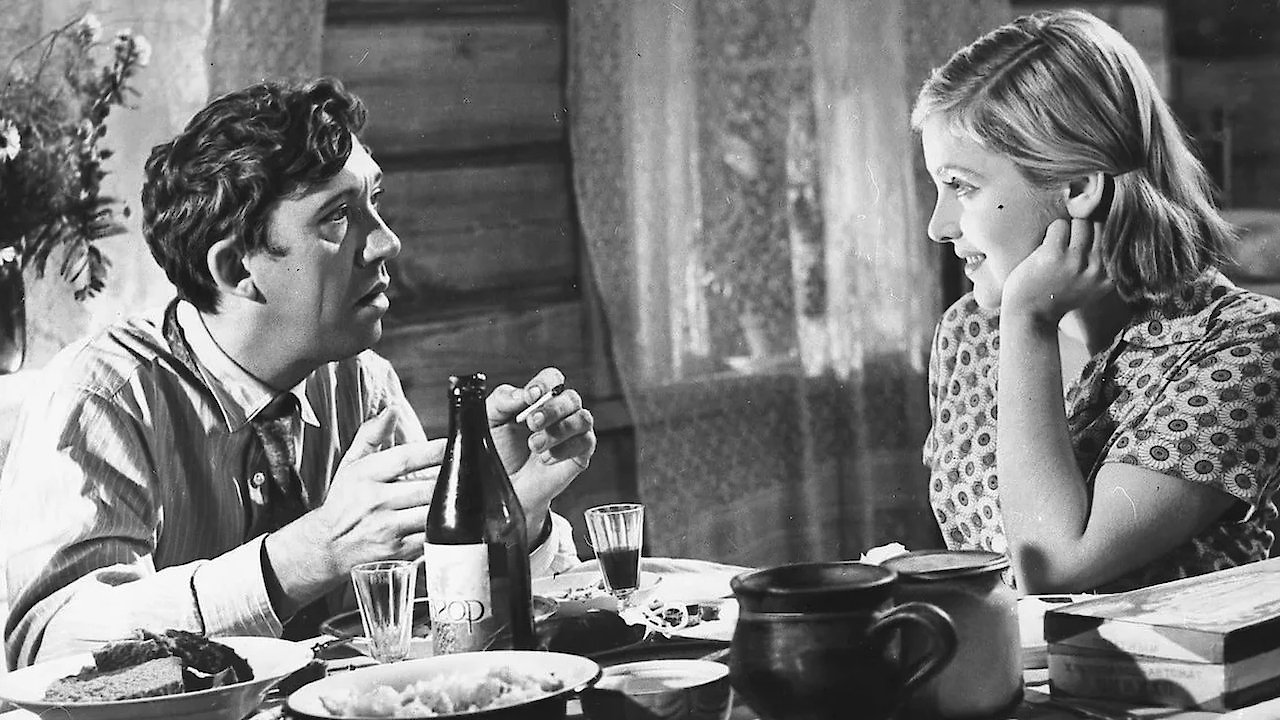-
Genres
-
CastInna GulayaYuriy NikulinLeonid Kuravlyov
-
DirectorLev Kulidzhanov
-
Release Date1961
-
Runtime1 hr 35 min
-
LanguageEnglish
-
IMDB Rating7.7 (839)

When the Trees Were Tall is a classic Soviet-era film that ingeniously captures the beauty and complexities of human relationships, moral dilemmas, and the transformative power of love and redemption. Directed by Lev Kulidzhanov and released in 1962, this film features a compelling cast including Inna Gulaya, Yuriy Nikulin, and Leonid Kuravlyov, whose performances contribute greatly to the poignant narrative and character development that drive the movie.
Set in the heart of the Soviet Union during the post-World War II era, When the Trees Were Tall opens by immersing the audience in a period fraught with rehabilitation and reconstruction, both in the literal and metaphorical sense. The film weaves a story around the central character, an emotionally bruised and guilt-ridden ex-soldier grappling with the shadows of his past. The performance is a nuanced exploration of a man's journey towards self-acceptance and the search for a purpose after the scars left by war.
Amid his struggles, the protagonist crosses paths with a young, vivacious village girl portrayed with infectious energy and sensitivity by Inna Gulaya. Her character embodies the vibrance and resilience of youth, as well as the idealistic hope of post-war Soviet society. She serves as a catalytic presence in the film, bringing change and awakening to the ex-soldier's life. The innocent, yet potent chemistry between the two leads captures the essence of unlikely connections that hold the power to heal and inspire.
The supporting cast enriches the film's tapestry, with Yuriy Nikulin and Leonid Kuravlyov delivering strong performances that add depth to the story. Nikulin plays a role that provides a touch of humor and lightness to the otherwise serious narrative. His character, while being a comic relief at times, also serves as a foil to the protagonist, highlighting divergent paths and choices made by individuals in the wake of the nation's recovery from the devastation of war.
Kuravlyov's character introduces an additional layer of complexity and a different perspective to the storyline, exemplifying how the aftermath of conflict affects different people in diverse ways. The interplay between the characters, portrayed by this talented group of actors, showcases the multifaceted experiences of Soviet citizens during a time of change, offering both a microcosmic and broader societal viewpoint.
The title "When the Trees Were Tall" is evocative of a time of innocence and natural splendor, symbolizing memories of the past and perhaps, a longing for a return to a simpler, purer state of being. It reflects the film's overarching themes of reminiscence, lost youth, and the potential for growth and regeneration. The trees stand as both literal and figurative markers of time, witnesses to the characters' journeys and growth, echoing the idea that despite hardship and loss, life continues to evolve and flourish.
From a cinematographic standpoint, the film distinguishes itself with picturesque landscapes, thoughtful framing, and a directorial eye that captures both the grandeur of Soviet scenery and the intimate moments of human interaction. Its visual storytelling is complemented by a score that resonates with the emotional tone of the film, intermittently stirring and understated, to underscore the character's internal and external experiences.
As much as When the Trees Were Tall is a film shaped by its time, dealing with themes specific to the Soviet experience, its message resonates universally. The story it tells is timeless—a tale of wounded individuals finding solace and redemption through connections with others and confronting the burdens of their past. It is a testament to the endurance of the human spirit and the restorative power of love and nature.
The juxtapositions in the film—rural versus urban settings, the isolation of the individual versus community ties, the levity of humor against the gravity of sorrow—create a rich palette from which the narrative draws its strength. The script allows for moments of introspection and dialogue that are both telling and tender, eliciting empathy and reflection from the audience.
Overall, When the Trees Were Tall is a thoughtful, emotionally charged film. It captures the essence of its era while telling a story that continues to speak to audiences about the enduring human capacity for growth and change. Its blend of drama, gentle comedy, romance, and a touch of the socio-political landscape of the era it depicts, make it a standout piece in Soviet cinema, and a poignant cinematic experience for viewers across different cultures and generations.
